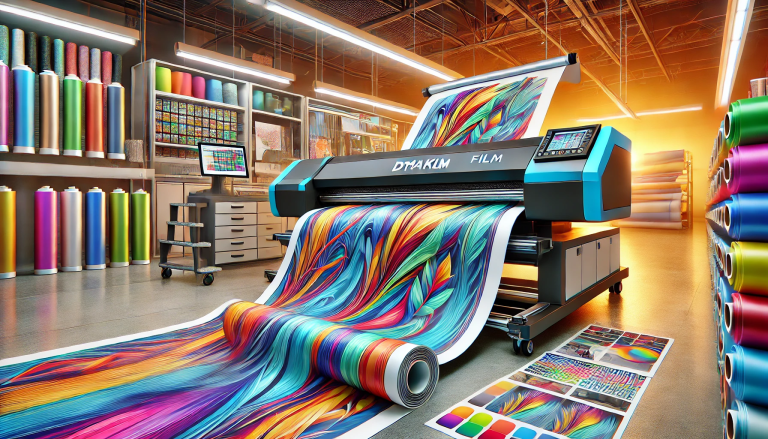In the dynamic world of printing technologies, Direct to Film (DTF) heat transfer stands out as a revolutionary method, promising unparalleled flexibility, quality, and efficiency. This technique has transformed how designers and manufacturers think about printing on various surfaces, particularly textiles. By delving into the nuances of DTF, we can uncover its potential to reshape the printing industry, making custom printing more accessible and sustainable than ever before.
The Essence of DTF Heat Transfer
Direct to Film heat transfer is a printing technique where designs are printed onto a special film before being transferred onto fabric using heat and pressure. Unlike traditional printing methods, DTF does not require pre-treatment of fabrics and can be applied to a wide range of textiles, irrespective of color or composition. This process involves printing a design onto a clear film with a liquid ink that includes a white underbase. After printing, the design is coated with an adhesive powder, melted to create a bond, and then pressed onto the fabric.
Advantages Over Traditional Printing Techniques
One of the most significant advantages of DTF heat transfer is its versatility. It can be used on cotton, polyester, silk, and even non-textile materials, making it incredibly versatile for various applications. This method also allows for vibrant, high-resolution color printing, ensuring that even the most intricate designs are crisp and clear. Additionally, DTF is more cost-effective for small to medium-sized runs compared to traditional screen printing, which requires extensive setup for each design.
Revolutionizing Custom Apparel and Beyond
The DTF technique has become a game-changer for the custom apparel industry. It enables small businesses and independent designers to produce small batches of customized items without incurring the high costs associated with traditional printing methods. This accessibility has fostered creativity and innovation, allowing for the personalization of clothing, accessories, and even home decor with minimal investment.
Environmental Impact and Sustainability
Sustainability is a critical concern in the printing industry, and DTF heat transfer offers several environmental benefits. The process is more eco-friendly than many traditional methods, as it reduces waste by printing directly onto a transfer film. This precision minimizes the excess ink and materials often wasted in other printing processes. Moreover, the inks used in DTF printing are generally less harmful to the environment, and because the technique is suitable for small runs, it encourages more responsible production practices, reducing overproduction and waste.
Challenges and Considerations
While DTF heat transfer presents numerous advantages, it also comes with challenges. The initial investment in DTF printing equipment can be significant, though it pays off in the long run through reduced production costs and waste. Additionally, the quality of the adhesive powder and the printer’s resolution are crucial factors in the final product’s quality, requiring careful selection of materials and equipment.
The Future of DTF Heat Transfer
As technology advances, we can expect to see further improvements in DTF heat transfer, including faster printing speeds, enhanced durability of the transfers, and even more eco-friendly ink formulations. These advancements will likely expand the applications of DTF beyond textiles, potentially revolutionizing how we print on various surfaces and materials.
Conclusion
Direct to Film heat transfer represents a significant leap forward in printing technology, offering a versatile, cost-effective, and environmentally friendly alternative to traditional methods. Its ability to produce vibrant, high-quality prints on a wide range of materials opens up endless possibilities for customization and creativity. As we continue to explore and refine this technique, the potential for innovation in the printing industry is boundless. The journey of DTF heat transfer is just beginning, but its impact on the world of printing is already profound, promising a future where the only limit is our imagination.



